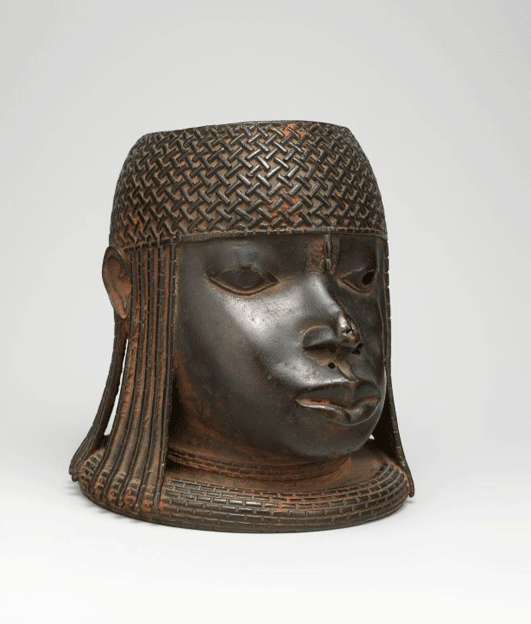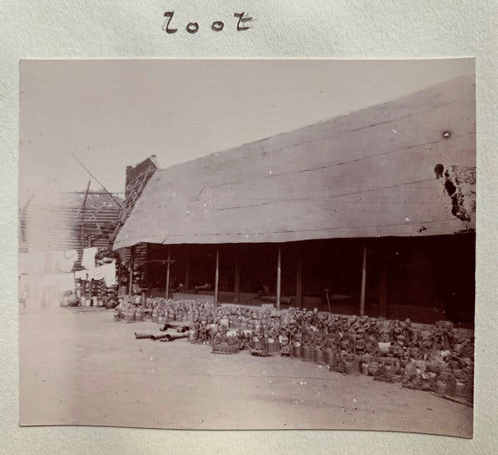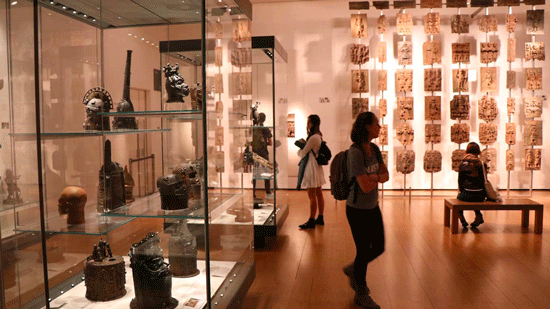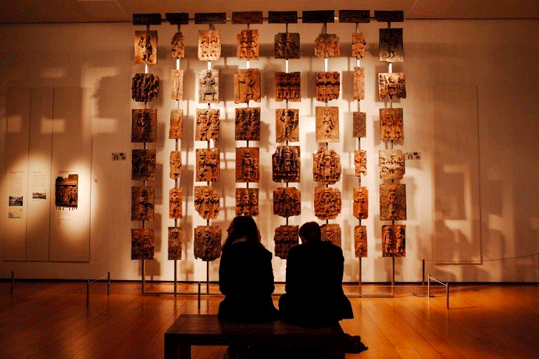Benin bronze sculptures have a contentious history, having been pillaged, looted and stolen by Europeans and distributed across Western museums. As many of these artworks are still displayed in museums to this day, it is imperative that we remind ourselves why they should be brought back to their original country.
The Benin that is referred to in this article is the kingdom of Benin, a land that was occupied by the Edo people and now located in the present-day southwest region of Nigeria. The kingdom of Benin should not be confused with and has no relation to Benin, a country situated in the western region of Africa, which was known as Dahomey during that era.
The kingdom of Benin was a ruling dynasty whose origins can be traced back to the beginning of the fourteenth century. King Oba, during his first years of his reign, commissioned brass commemorative heads in order to honour his immediate predecessor. The commissioned works consisted of sculptures and plaques that were proudly exhibited in the royal palace.
The kingdom was immensely proud of their rich history, and they produced artworks that rivalled those created by their counterparts in the West, who perceived themselves as superior. These artworks and sculptures were visual archives for a society that did not document its history through written form, holding in them a rich history. Not strictly for decorative purposes, they also served as religious functions.
For this reason, they should not be denied to their rightful owners. The stolen cultural artworks should be returned to their original countries.

It is imperative to know the context as to how these artworks were taken from their original country in order to understand their significance and the outrage that surrounds them. The looted artworks were stolen during the scramble of Africa, the European looting of African art that began with the British punitive expedition against Benin in 1897.
After the British forces burnt down the Benin kingdom along with the palace in order to acquire the illicit artworks, brashly and arrogantly taking pictures of the stolen goods. Even worse, these items of heightened cultural and religious significance were labelled as mere “loot”.
These incidents were highly documented and can be seen today in letters, journals, and photographs from the period. After their theft, the artefacts were sold to European and North American museums.

Even though the origin of these artworks is not disputed, museums have still been reluctant to return them to their rightful owners. The British museum is considered the world’s largest cultural museum, containing over eight million cultural artefacts from across the world, including thousands of Benin sculptures.
However, in March 2000, the Benin royal family officially requested from the UK government that “all the cultural property belonging to the Oba of Benin illegally taken away by the British in 1897, should be returned to the rightful owner, the Oba of Benin”. Since then, many have backed this movement, but it has fallen on deaf ears as museums have largely ignored their pleas.
However, French President Emmanuel Macron has advocated for these artworks to be returned home, even commissioning a report which backed his sentiment. Yet, museums have remained defiant, ignoring his appeals.
Some Europeans have wrongly stated that Africans cannot take care of these artworks, or even more condescendingly, that Africans did not realize their value as art until Europeans deemed it so. Art collector Adam Lindemann and gallery owner Julien Flak employ this rhetoric, arguing that while restitution sounds good on paper, it isn’t practical in reality. As a solution to this contentious issue, some museums have been loaning the artworks to the rightful owners of these artworks.
On the other hand, there are museums that are taking steps in the right directions. In August 2021, the Quai Branly museum in Paris returned 26 sculptures. In November 2021, the Smithsonian Institution’s National Museum of African Art announced that it had officially removed its Benin Bronzes from display as the first step in the process of repatriating the artefacts. The Netherlands National Museum of World Cultures and the Linden Museum in Stuttgart have also joined the rank, announcing their own plans to return stolen art.

Experts have estimated that 90 percent of African art is outside the continent, including engraved elephant tusks, statues, thrones and manuscripts. Museums have amassed plenty of fortunes through the ill-gotten artworks, and they should be duty-bound to not only return them, but also to aid in the construction of or refurbishment of museums in order to accommodate them once they are returned.
In doing so, they will take an important step towards the United Nations Sustainable Development Goals for Decent Work and Economic Growth and Industry, Innovation and Infrastructure, as returning the artwork boosts tourism sectors in local economies and the construction of infrastructures, creating employment and business opportunities as part of these developments.

It can be argued that Africa and Africans should focus on more important issues such as curbing disease spread and creating employment rather than spending their resources on fighting for the return of stolen artworks. Similarly, many were against the recent renaming of streets and cities in South Africa and India, stating that it was a waste of taxpayers’ money.
However, it is imperative for former British colonies to reclaim their history and pass it down to future generations, as safeguarding cultural heritage is one of the targets in the Sustainable Development Goal for Sustainable Cities and Communities.
The Benin sculptures have become symbolic of the thousands of stolen items that have been stolen by former colonial powers — an issue that goes beyond artwork.
There many more items that need to be returned, such as the world’s largest diamond that was stolen from South Africa in 1906 by the British royal family, the Koh-i-Noor Diamond from India that was handed over to Queen Victoria in 1849 after the British colonized India, the Ethiopian Manuscripts that were stolen by the British after the battle of Maqdala in 1868, and much more.
The movement of restitution is a step in the right direction in ensuring that former colonial powers take accountability and responsibility for the atrocious acts they have committed.
